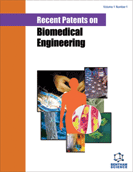Abstract
Nanostructures in the form of tubes, wires, crystals, rods, spheres, and fibers have been fabricated and assembled into various macrostructures for a variety of high technology applications. Nanofeatures impart several amazing properties to these macrostructures including high surface area, surface functionality, and superior mechanical, optical, electrical, and magnetic properties over the parent bulk material. Polymeric nanofibers in the form of nonwoven cloth, membrane, braids and tubes are extensively used for daily needs, and in addition used as filters, protective clothing, and for a variety of industrial and biomedical applications. Electrospinning or electrostatic spinning has emerged as a very popular technique to fabricate polymeric nanofiber matrices. More than 100 different polymers of natural, synthetic origin, their blends and composites have been electrospun into different three dimensional (3-D) macrostructures. Electrospinning provides opportunities to manipulate and control surface area, fiber diameter, porosity and pore size of nanofiber matrices. These nanofiber matrices closely mimic the structure of extracellular matrix (ECM) and influence cellular activities both in vitro and in vivo. Nanofiber macrostructures have been used as a vehicle to deliver therapeutic agents, as scaffolds for engineering various tissues and also serve as an integrated part of biomedical implants. Present review will cover some of the recent important patents that use electrospun nanofiber matrices for various biomedical applications.
Keywords: Electrospinning, nanofibers, nanofiber coatings, biocompatible scaffolds, tubular conduits, tissue engineering, biomedical implants, core-shell nanofibers, bio-active agent delivery, nitric oxide delivery
 27
27

